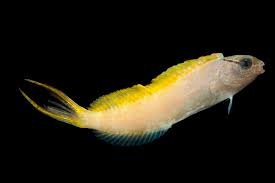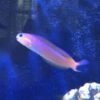Dragons in the Art and Sculpture of Chinese Dynasties
Dragons have played a central role in Chinese art and sculpture for thousands of years, evolving alongside the changing cultural, religious, and political landscapes of different dynasties. Unlike Western dragons, which are often depicted as malevolent creatures, Chinese dragons (龙, Lóng) are seen as symbols of power, wisdom, prosperity, and divine protection. Throughout China’s long history, dynasties have used dragon imagery in painting, calligraphy, sculpture, ceramics, and architecture, each era adding unique artistic elements that reflect its values and aesthetics.
This article explores how dragons have been represented in Chinese art and sculpture across different dynasties, examining their significance, stylistic changes, and enduring influence.
1. The Origins of Dragon Imagery in Early Chinese Art (Shang and Zhou Dynasties, 1600–256 BCE)
The earliest depictions of dragons in Chinese art date back to the Shang Dynasty (1600–1046 BCE) and Zhou Dynasty (1046–256 BCE). These early images were simplistic yet symbolic, often appearing in bronze vessels, jade carvings, and oracle bones.
Dragon Symbols in Shang Dynasty Art
- Bronze vessels (Ding, 鼎) were decorated with coiled or snake-like dragon motifs used in ancestral rituals.
- Oracle bones, used for divination, contained inscriptions of dragon-like figures as spiritual messengers.
- Jade dragons were carved for burial ceremonies, symbolizing protection in the afterlife.
The Zhou Dynasty and the Emergence of the Imperial Dragon
- The Zhou Dynasty saw the formalization of dragon imagery as a symbol of divine rule.
- Bronze inscriptions and ceremonial weapons featured elongated, serpentine dragons with intricate patterns and curling whiskers.
- The Five-Clawed Dragon began to emerge, later becoming a symbol exclusive to emperors.
2. Han Dynasty (206 BCE – 220 CE): The Rise of Expressive Dragon Art
During the Han Dynasty, dragon representations became more expressive and detailed, appearing in tombs, murals, and ceramics.
Dragon Motifs in Han Dynasty Tombs
- Many Han tombs were adorned with dragon carvings as guardians of the deceased’s spirit.
- Stone relief sculptures featured dragons with elongated bodies, large eyes, and flowing whiskers, often depicted flying among the clouds.
Dragons in Han Dynasty Ceramics and Bronze Mirrors
- Celadon pottery often showcased dragons in swirling patterns.
- Bronze mirrors contained intricate dragon engravings, believed to reflect wisdom and divine vision.
The Han Dynasty also established the connection between dragons and the celestial world, influencing later dynasties’ use of dragons in astronomy and mythology.
3. Tang Dynasty (618–907): The Flourishing of Dragon-Inspired Art
The Tang Dynasty, known for its artistic and cultural achievements, saw the golden age of dragon imagery in paintings, murals, and sculptures.
Tang Dynasty Murals and Paintings
- Dunhuang cave paintings feature majestic golden dragons flying alongside deities and celestial beings.
- Dragons became more fluid and dynamic, often depicted as playful creatures interacting with clouds and waves.
Dragon-Inspired Ceramics and Sculptures
- Tang sancai (three-colored glazed pottery) frequently featured dragon sculptures used in temples and palaces.
- Gold and silver dragon ornaments adorned imperial clothing and ceremonial objects.
The Tang era’s open trade routes introduced Persian and Indian artistic influences, making dragon designs more ornate and elaborate.
4. Song Dynasty (960–1279): The Artistic Refinement of Dragon Forms
The Song Dynasty emphasized grace, realism, and subtlety in dragon art. Unlike the bold and dynamic Tang dragons, Song dragons became elegant and flowing, often appearing in ink paintings, ceramics, and wood carvings.
Dragon Calligraphy and Ink Paintings
- The Song Dynasty mastered the art of ink-wash painting, with dragons appearing in minimalist yet powerful brushstrokes.
- Famous artists like Chen Rong (陈容) painted dragons in motion, using bold yet delicate brushwork to capture their mystical essence.
- Calligraphers incorporated dragon-like curves in their script, blending poetry and visual art.
Song Dynasty Porcelain and Sculptures
- Ru ware and Guan ware ceramics featured subtle dragon reliefs, blending simplicity with refinement.
- Jade dragon carvings became more intricate, emphasizing delicate details and realistic proportions.
Song-era dragons were often associated with scholarly wisdom, natural harmony, and spiritual enlightenment, reflecting Confucian and Daoist ideals.
5. Yuan Dynasty (1271–1368): The Mongol Influence on Dragon Art
During the Yuan Dynasty, ruled by the Mongols, dragon imagery took on a more powerful and fierce appearance, symbolizing imperial strength and military conquest.
Mongol-Inspired Dragon Designs
- Dragons became more muscular, with pronounced claws and sharp facial features.
- Blue-and-white porcelain introduced bold dragon motifs, often surrounded by waves and clouds.
Dragon Motifs in Architecture
- Temple walls and palace gates were adorned with larger-than-life dragon reliefs.
- The Nine-Dragon Wall (九龙壁, Jiǔ Lóng Bì) was constructed in Beijing and Datong, showcasing dragons in vibrant, glazed tiles.
Under Mongol rule, dragons were often depicted as fierce protectors of the empire, reflecting military dominance.
6. Ming Dynasty (1368–1644): The Peak of Imperial Dragon Symbolism
The Ming Dynasty saw dragons become highly regulated symbols of the emperor. Only the emperor could use the five-clawed dragon, while four-clawed and three-clawed dragons were reserved for nobility and officials.
Ming Dynasty Imperial Porcelain
- Blue-and-white porcelain became world-famous, often depicting coiling dragons amid waves.
- Jingdezhen kilns produced intricately detailed dragon plates, vases, and bowls.
Ming Dynasty Palace Sculptures and Architecture
- The Forbidden City featured dragon carvings on roof beams, staircases, and throne decorations.
- Dragon pillars stood at the entrances of imperial temples, representing heaven’s connection to the emperor.
During this period, dragons symbolized absolute power, reinforcing the emperor’s divine right to rule.
7. Qing Dynasty (1644–1912): The Lasting Imperial Dragon Legacy
The Qing Dynasty continued the Ming tradition but introduced even more elaborate dragon designs in art and sculpture.
Qing Dynasty Silk Embroideries and Textiles
- The “Dragon Robes” (龙袍, Lóngpáo) worn by emperors featured gold-threaded dragons against deep yellow silk.
- Palace tapestries depicted dragons with pearl-like flames, symbolizing wisdom and immortality.
Qing Dynasty Jade and Ivory Dragons
- Exquisite jade dragon carvings were made as imperial gifts and ceremonial objects.
- Ivory dragon sculptures, carved with extreme precision, showcased the dynasty’s artistic excellence.
The Qing Dynasty’s downfall marked the end of imperial rule, but dragon art remained a strong cultural symbol in Chinese identity.
Conclusion: The Timeless Legacy of Dragons in Chinese Art
Throughout China’s long history, dragons have been central figures in art and sculpture, evolving from simple Shang Dynasty carvings to elaborate Qing Dynasty masterpieces. Each dynasty contributed its own interpretation of the dragon, reflecting the era’s political power, religious beliefs, and artistic advancements.
Even today, dragons continue to inspire modern Chinese art, proving that this mythical creature remains an enduring and powerful symbol in China’s artistic and cultural heritage.



